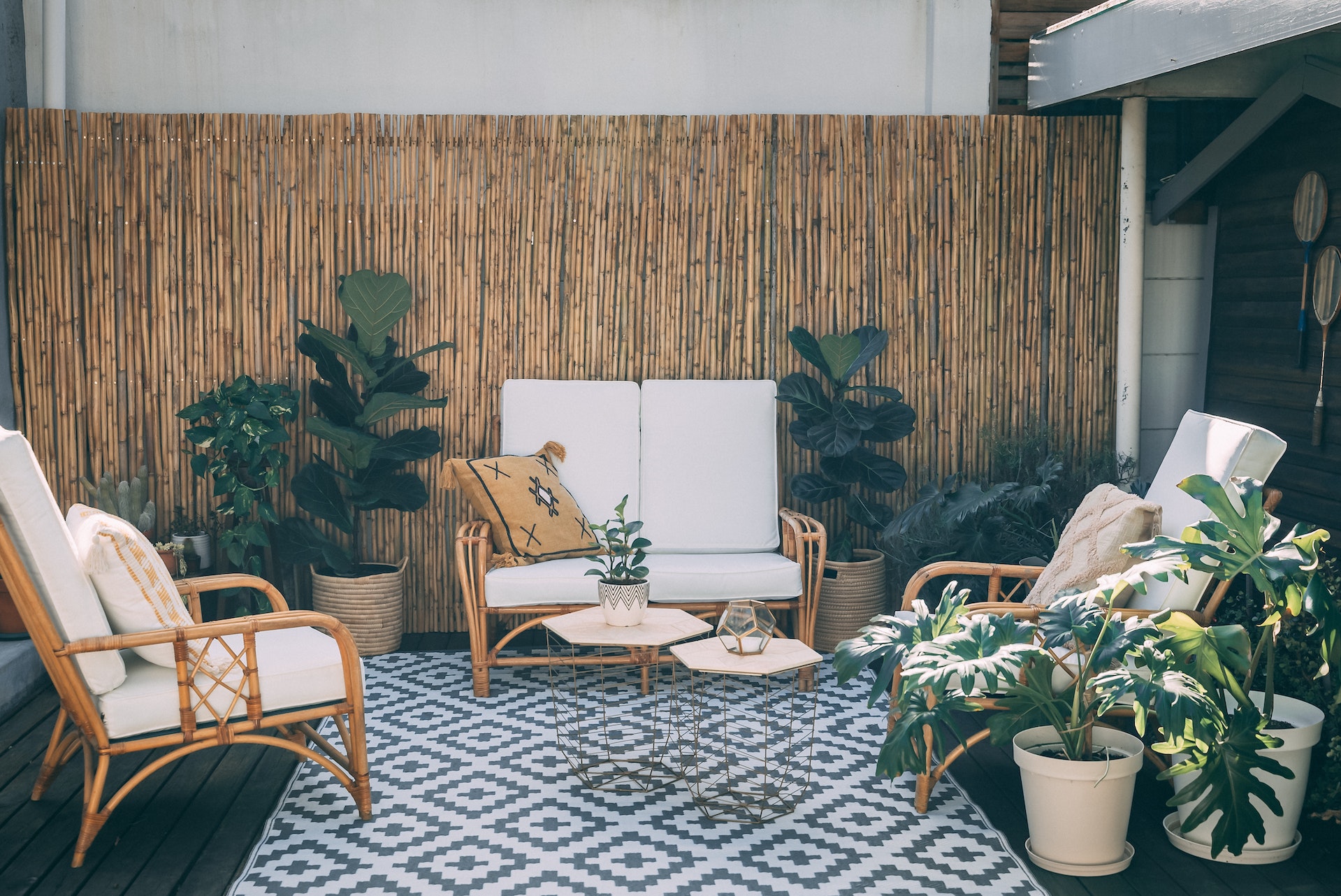Your garden is a haven, a space that reflects your personality and tastes. One of the key decisions you’ll make when designing your perfect outdoor space is selecting the right garden fence. At Green Team Landscaping, we understand the importance of this choice, so we’ve crafted this comprehensive guide to help you navigate the different types of garden fencing available.
Understanding the Different Types of Fencing for Gardens
From the robust close board fencing to the charming picket fencing, and the versatile trellis fencing to a few other options, each type of fencing brings a unique character to your garden. Let’s delve deeper into these popular choices and introduce a few more for you to consider.
Close Board Fencing
This type of fencing, built with overlapping vertical fence panels and concrete fence posts, combines strength, durability and aesthetics. It offers high privacy while withstanding the harsh elements.
This type of fencing, built with overlapping vertical fence panels and concrete fence posts, combines strength, durability and aesthetics. It offers high privacy while withstanding the harsh elements.
Advantages: Excellent privacy, wind-resistant.
Disadvantages: Higher installation and maintenance cost.
Maintenance: Treat annually with a good quality wood preservative. Check and replace damaged panels as necessary.
Picket Fencing
Picket fencing, with its iconic pointed tops, offers a quaint country feel. It’s a favourite choice for front gardens, giving you a defined boundary without obstructing views.
Advantages: Attractive, good for defining boundaries.
Disadvantages: Less privacy. May be less resilient in severe weather conditions.
Maintenance: Regular painting or staining can help prolong its lifespan. Repair or replace broken pickets as needed.
Trellis Fencing
Trellis fencing, with its support for climbing plants, adds a decorative touch to your garden. From intricate lattice fencing designs to contemporary slatted fencing, there’s a style to suit any garden.
Advantages: Decorative, great for supporting plant growth.
Disadvantages: Less privacy unless covered with plants. Not the best for high winds.
Maintenance: Check regularly for plant overgrowth which can damage the structure. Use a wood preservative for longevity.
Vinyl Fencing
Vinyl fencing is a low-maintenance, modern alternative to traditional wooden fencing. It is resistant to pests and doesn’t rot, making it a lasting choice.
Advantages: Minimal maintenance, long-lasting.
Disadvantages: Higher initial cost, less natural look than wood.
Maintenance: Clean with a mild detergent and water to keep it looking fresh. It doesn’t require painting or staining.
Wrought Iron Fencing
Wrought iron fencing, with its array of ornate designs, adds elegance and grandeur to your outdoor space. It is strong, secure and requires regular upkeep to prevent rust.
Advantages: Strong and decorative, offers high security.
Disadvantages: High maintenance, costly to install and repair.
Maintenance: Regular painting or powder coating is required to prevent rust. Repair bent or broken sections promptly.
Bamboo Fencing
Bamboo fencing, with its eco-friendly credentials, can bring a touch of the tropics to your garden. It’s a sustainable choice, but durability can be an issue.
Advantages: Eco-friendly, aesthetically pleasing.
Disadvantages: Less durable, may require frequent replacement.
Maintenance: Apply a weather-protective sealant annually. Replace damaged sections promptly.
Chain Link Fencing
Chain link fencing is a cost-effective and durable option. While it doesn’t offer much in terms of privacy, it’s excellent for delineating boundaries and keeping pets contained.
Advantages: Cost-effective; durable.
Disadvantages: Low privacy, may be less visually appealing.
Maintenance: Regularly check for rust or damage. It can be painted to improve its appearance.
Horizontal Fencing
Horizontal fencing is a contemporary style that can make your garden appear wider and more spacious. These fences are typically made of wooden planks positioned horizontally, creating a sleek and modern look.
Advantages: Adds a modern and spacious feel. Can be customised in terms of gaps between slats.
Disadvantages: Requires precise installation. May require more materials which can make it costlier.
Maintenance: Similar to other wooden fences, horizontal slats require treatment with a wood preservative and may need occasional cleaning or painting.
Selecting the Right Garden Fence For You
Choosing the best type of fencing for gardens depends on various factors, including garden size, climate, wind levels, aesthetics, and budget. Remember, each fence type has different maintenance requirements, so consider these in your decision-making process.
Check out our article on garden fencing ideas here for more fence inspiration.
Which Fence Can Withstand High Winds?
For wind-prone areas, close board fencing is an excellent choice. The solid design of the overlapping panels, combined with sturdy concrete fence posts, can withstand high winds.
DIY vs Professional Fence Installation
While installing a garden fence can be a fulfilling DIY project, it’s important to consider the time, tools, and expertise required. For example, installing a close board fence or a horizontal fence needs precision and may be challenging for DIY novices.
Professional installation ensures that the fence is sturdy, level, and built to last. It also takes the hassle out of sourcing materials, and most importantly, professionals are aware of the local regulations regarding fencing.
Get in touch with us today for a free quote to install your garden fence.
Personalising Your Garden Fence
There are numerous ways to add a personal touch to your garden fence. If you’re opting for a wooden fence, painting or staining can not only help to protect the wood but also allows you to tie the fence into your overall garden colour scheme.
For lattice and trellis fencing, climbing plants can transform the fence into a living wall of greenery. Outdoor lighting can be added to any fence type to enhance the ambience and make your garden a welcoming space after dark.
Local Regulations
Before installing a fence, it’s essential to check local regulations. Some areas have rules on the maximum height of fences, especially those in the front garden. There may also be restrictions on certain types of fences or requirements to obtain a permit before installation.
A professional fence installer or garden designer will be well-versed in these rules and can guide you to avoid any pitfalls.
Your Garden, Your Fence - Let Us Help With Installation
Choosing the right garden fence should be an enjoyable part of creating your dream outdoor space. With an understanding of the pros and cons of different types of fencing, you can make an informed choice that complements your garden beautifully.
Professional installation is key to ensuring your fence stands the test of time. Contact Green Team Landscaping today for a free quote, and let’s work together to bring your garden dreams to life. After all, your garden is a natural extension of your home, so let’s make it the best it can be!


